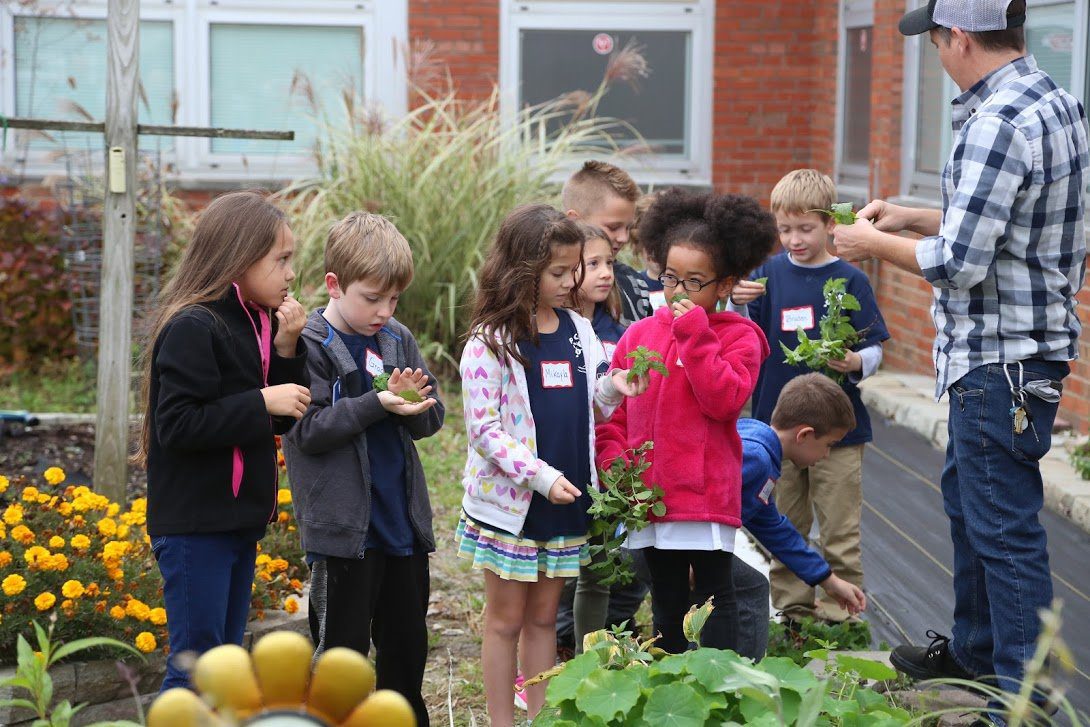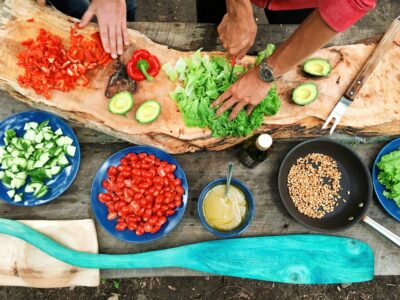When over 40% of children think that bacon comes from a plant and french fries are some kind of meat, it’s probably time to evaluate how out of touch our youngsters are with where their food comes from. One nonprofit is addressing the problem right at the source by bringing children back to the garden.
Spice Field Kitchen: Revolutionary Food Engagement
Spice Field Kitchen grew out of the belief that soil health is directly connected to nutrient density in our foods, which is directly linked to our own personal health and wellness. The best way to understand all of those links is to bring people into the garden and let them get their hands dirty in the process of making the food that we eat.
According to their website, “Connecting people with the source of their food can help build vibrant communities, and we believe it can change the world.” To do this, Spice Field Kitchen offers field-based, hands-on learning experiences that combine planting and harvesting food on a farm with food prep in the kitchen, helping students and adults alike see the immediate and direct farm-to-table connection.
Spice Field Kitchen’s programming varies, from onsite farm tours and plant-and-pick sessions at their Spice Acres property in the Cuyahoga Valley National Park not far from Cleveland, Ohio, to offsite school and community visits from the SFK Mobile Kitchen and Garden. In any of their programs, participants will engage in some version of the “full cycle of food,” from plant to harvest to kitchen to table to compost and back again.
Bring the Full Cycle of Food to Your Kids and Kitchen Table
If you aren’t from around these parts, never fear, because Spice Field Kitchen also offers an online curriculum for students that is fast, easy to access, and FREE.
“Local Lessons for Growing Minds encourages students to understand local food systems and how to make healthy food choices, learn about the importance of where their food comes from and connect lesson topics across different STEM subjects and courses.”
Visit their website to sign up for Local Lessons for Growing Minds.
There are other hands-on ways you can help your littluns learn where their food comes from, all from your own home. Discovering how to grow your own food is an empowering experience that can also reinforce the reality that God provides everything we need. Here are several ways you can invite your children into greater awareness of God’s provision and the full cycle of food:
Plant an Indoor Herb Garden
These cute window shelf gardens will give your child the chance to watch seeds come to life with plants that are fairly simple to maintain and harvest. A variety of different fresh herbs will help your child experience the difference between parsley and cilantro, basil and mint. Give your child the freedom to pick and taste the herbs you’ve planted, and help them experiment with different flavors.
Up Your Game: Plant a Patio Garden
As more and more of us find ourselves living in cities, container gardening has taken off. You can plant all kinds of fruits and vegetables in containers as long as the plant has the proper ingredients to grow well. The most important factor to keep in mind is how much sunlight will reach the space where your containers will be. Based on that information, you can choose the appropriate plants and start growing! Plant Natural Research Center offers this go-to guide for the best fruits, veggies, herbs, and flowers to grow in containers.
With food growing right in your backyard (or balcony), it will be nearly impossible for your children to miss the connection between the tomatoes on the vine and the tomatoes in your salad.
Start or Join a Community Garden
Community gardens are a great way to meet new people in your community, share space and time with your kids and their friends, and grow fresh and healthy food. If your community doesn’t already have one, investigate your community’s vacant lots and gather a group of other community members to start a gardening club to bring more green to your neighborhood.
Shop for Food Together
When you’re at the grocery store, explain to your children where the food you’re buying comes from. Where are apples grown? How about that bacon—tree or pig? If the season is right, make a habit of taking your kids to farmer’s markets and pick-your-own farms. Both of these outings are opportunities to connect the food they know and love with the places where it’s grown.
Cook Together
Invite your handy little helpers into the kitchen with you so they can watch (and help!) as you make their favorite meals. Allowing them to participate in the process of food prep will give them a greater appreciation for the work that is required to make each meal as well as connecting them with what their food looks like before it’s cooked.
Compost Together
If you have space in your own yard, starting a compost bed is a simple and sustainable way to help children understand the impact of food waste and the full food cycle. When you collect food scraps and redirect them from your trash can to your compost bin, you’re helping the environment and restoring important nutrients to your soil. If you don’t have the space to compost easily, investigate whether your city or town offers a composting service.
Study Farming Metaphors in Scripture
From mustard seed to vineyards, our Bible is packed with agricultural metaphors and parables. Discuss these stories and talk about where the food they are referring to is grown. Look up photos of vineyards and mustard seeds and other plants described in the Bible to help your family connect better with the stories Jesus shares. If you need a guide to help you enter into the foodie favorites of Scripture, connect with Edible Theology’s six-lesson curriculum, “Bake with the Bible.”
What ways have you found to connect your children with the bread and the Bread of Life? Join the discussion and share your comments on Instagram!





 Copyright
2024
Root and Vine
Copyright
2024
Root and Vine